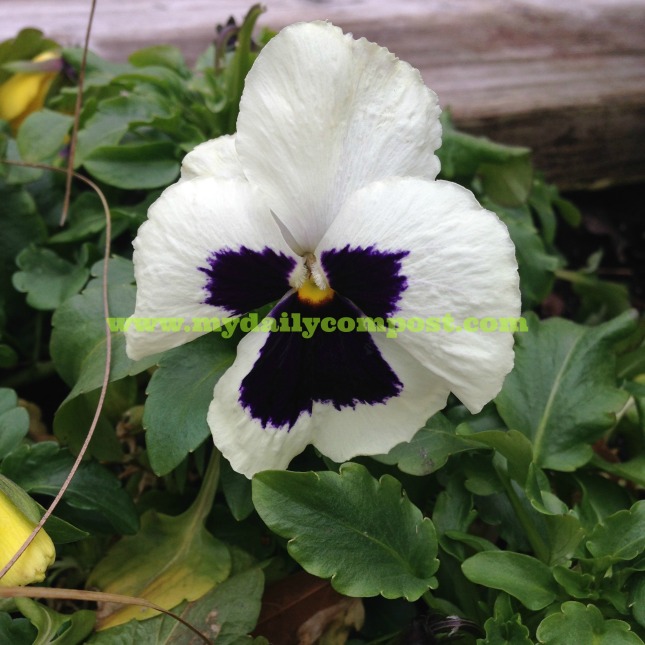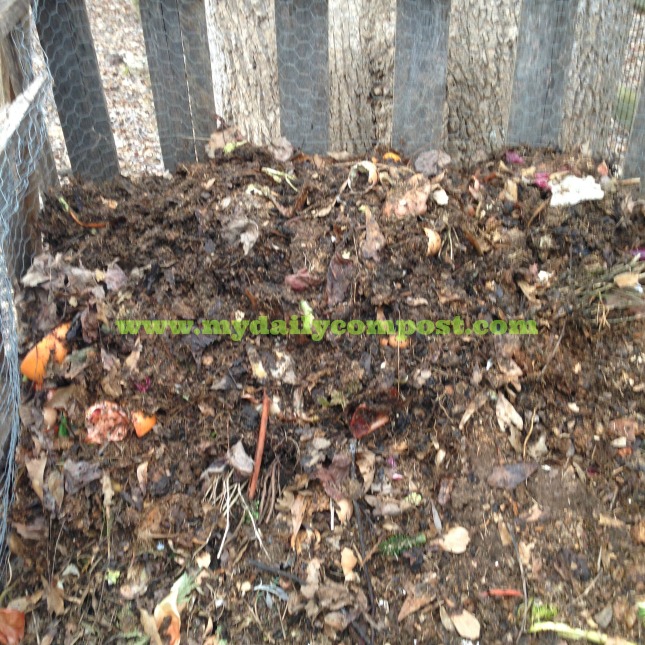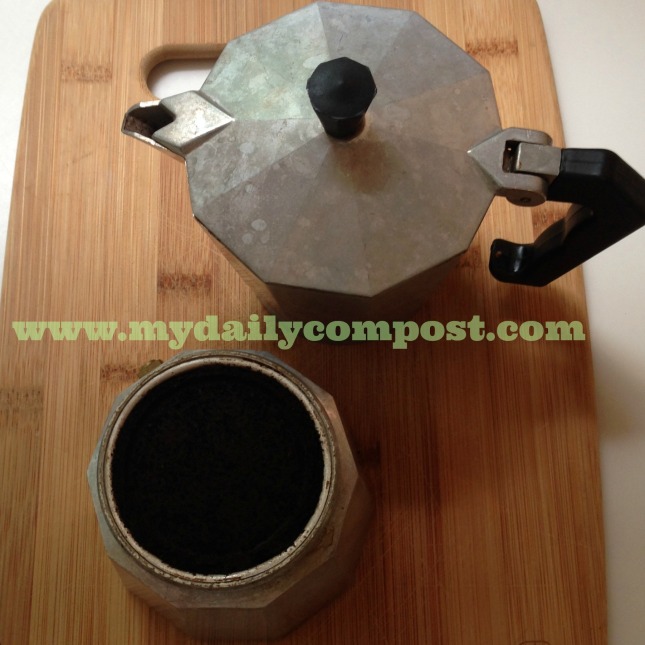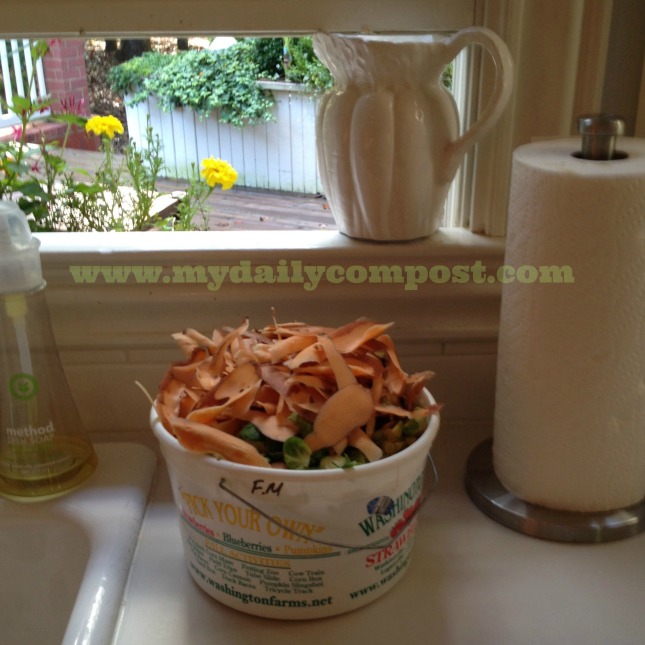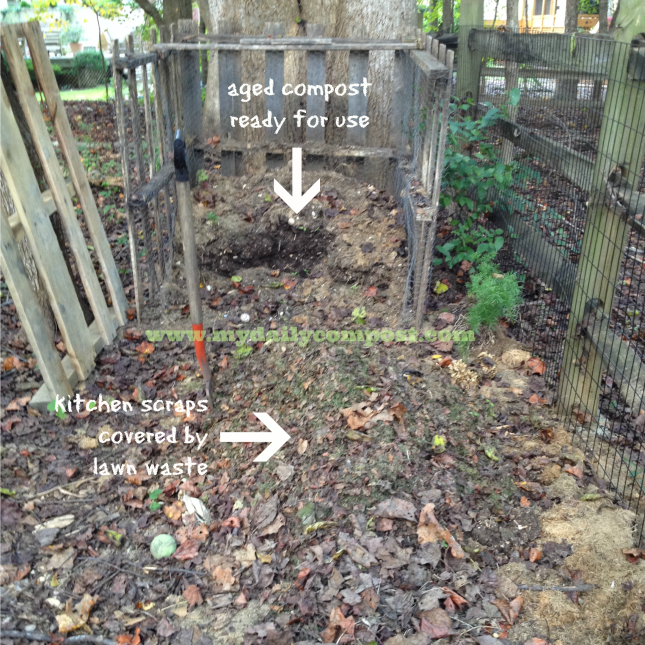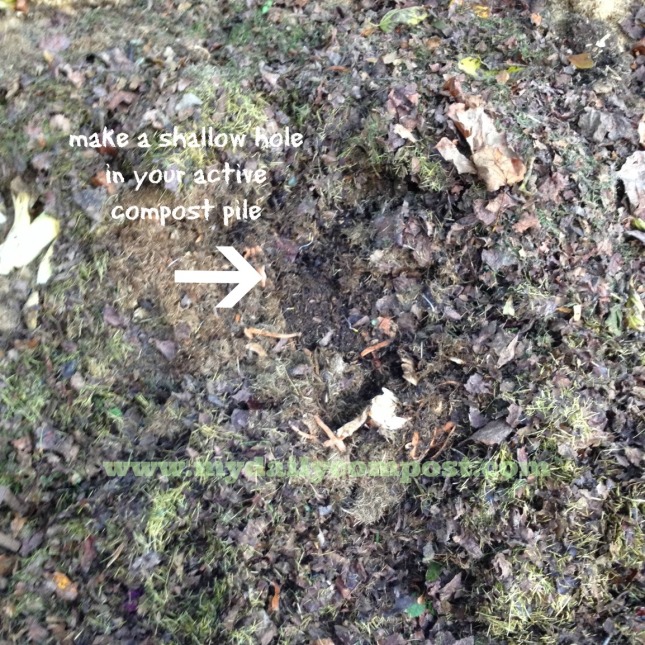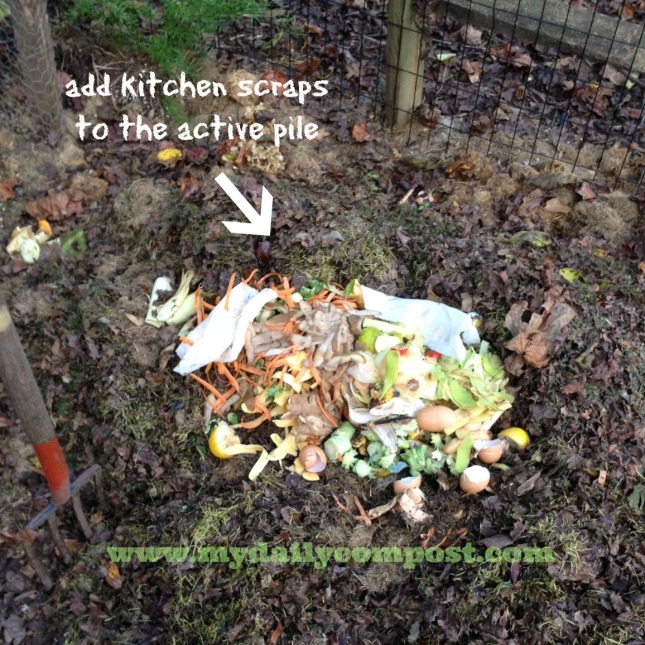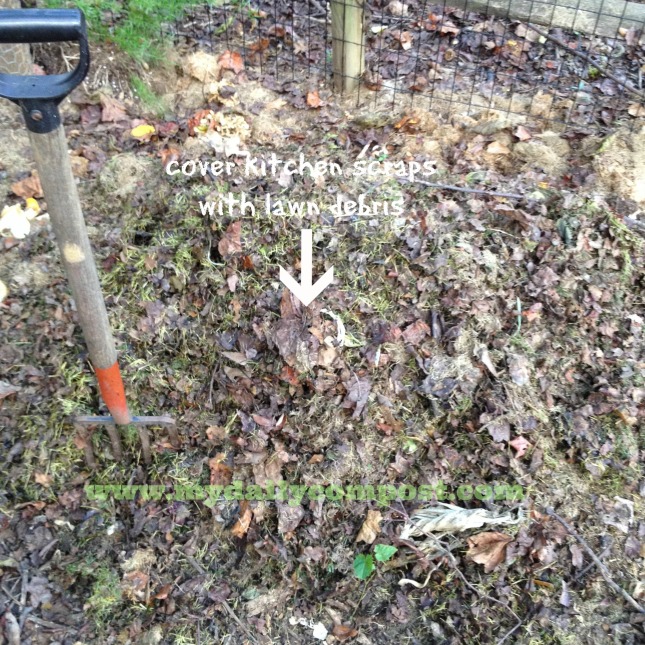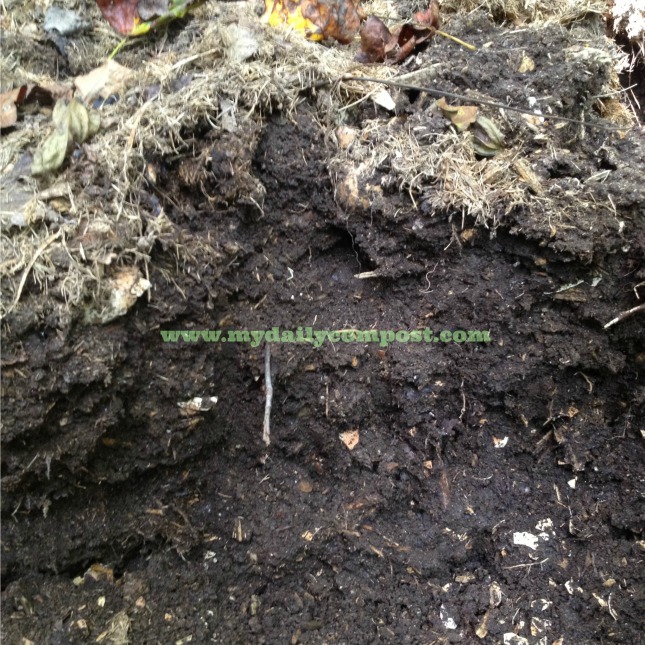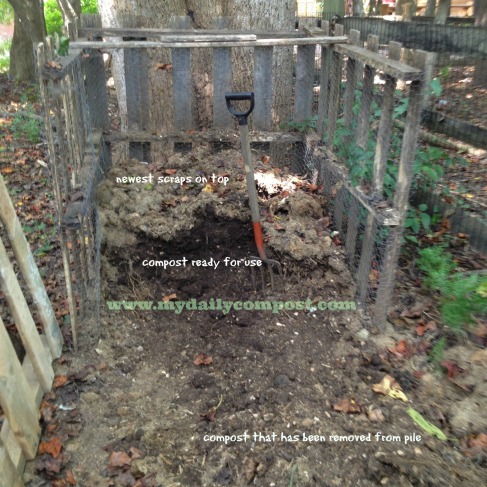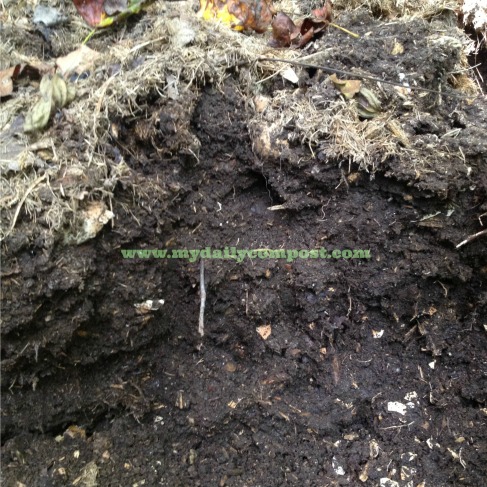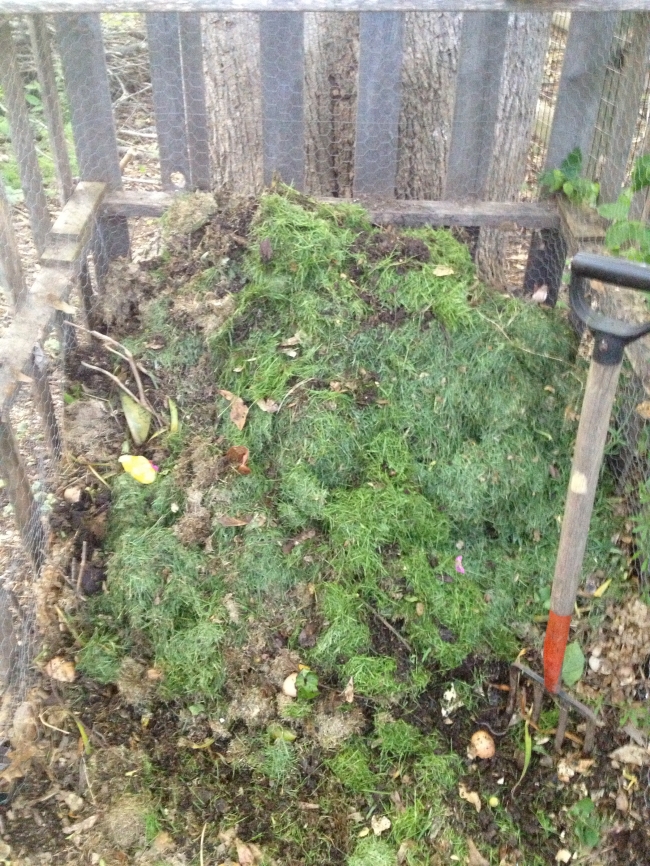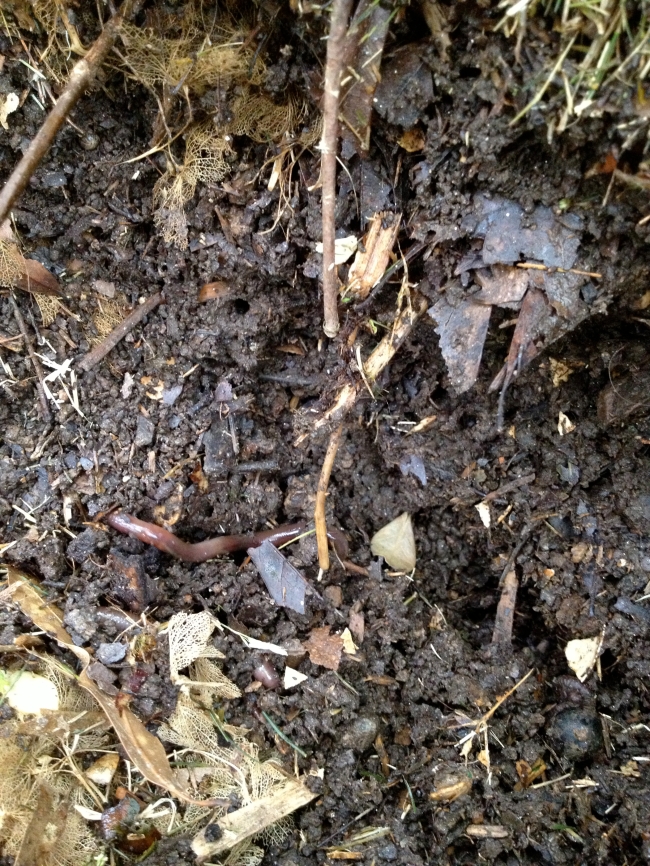We continue to be blessed with sunny skies in the South so, instead of simply looking out my window at the garden, I finally stepped outside for a look around. Let me tell you it was not pretty. Freezing temperatures have reduced my brave broccoli to brittle stalks, my kale to withered clumps, and everything else to unidentifiable leaves and mush. Even my pansies, reliable winter bloomers in Atlanta, have suffered and died back and just a few brave blooms were soldiering on.
The good news is, my compost pile looks marvelous! (Except for the left side wooden support, which will require some mending come spring.)
This photo was taken after tossing three buckets of kitchen scraps on the pile. I was busy prepping food for a ballet school cast party and since those buckets were filled with smelly onions, in my rush I put them outside (to keep from fouling the air in the house) and forgot about them for a few days. Near freezing temps kept them from rotting in the buckets and luckily, since it’s not my habit to leave fresh scraps outside the kitchen, backyard critters missed a great salad bar opportunity.
It’s important not to leave food scraps sitting on top of the pile, especially in the winter. Chilly temps will slow down decomposition, but more important, any kind of food is an open invitation to all the squirrels, raccoons, opossums, and more. You don’t want any wildlife feasting in your compost!
I keep a pitchfork and a pile of raked, fallen, decomposing leaves right next to my compost pile. This helps to balance the “browns” and “greens” of the compost pile. More on this in a minute. My standard practice is to toss the scraps on the pile, then liberally cover the scraps with a few forkfuls of leaves. It should look like this. Notice I also tidied up some bits and pieces that had strayed from the body of the pile.
The science behind compost is fascinating, because “greens” and “browns” does not mean the color of the scrap but the property of the organic substance. An easy test is to get scraps wet and wait for a few days. If it smells awful it’s a green. It not, it’s a brown.
Greens are high in nitrogen (or protein) and help the resulting bacteria grows quickly to help heat up the pile. The hotter the pile the faster the scraps will decompose.
Browns are high in carbon (or carbohydrates) supply the energy and food the soil needs, Plus the carbon helps keep any nasty odors in check while at the same time keeping the nitrogen from evaporating. Carbon creates rich humus (not the kind you can eat).
You certainly can mathematically balance your compost pile, but that’s not my style. I’m happy to toss equal amounts of kitchen and yard waste together, give it sun and rain and time and before you know it you’ve got new rich soil.
Want more specific info? Here’s a book I highly recommend. Happy composting!
